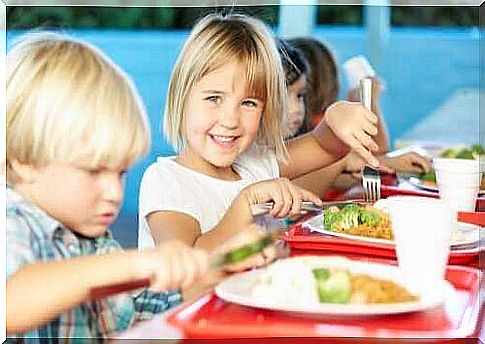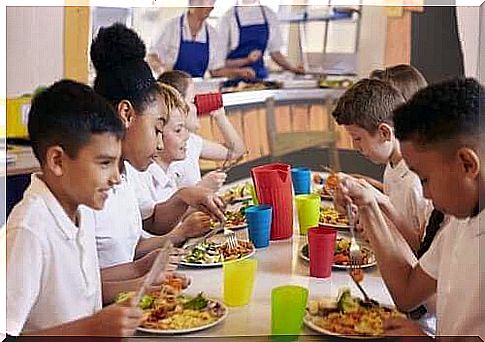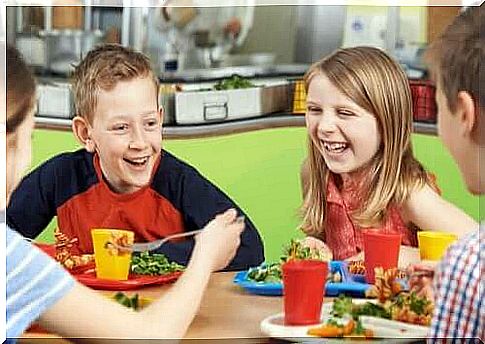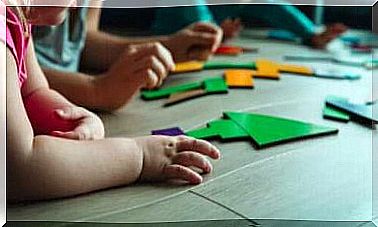School Food And Nutrition: A Healthy And Varied Diet

In schools around the country, it is normal for children to use the canteen to get school meals. Therefore, it is important that the schools provide healthy and varied food for the students.
Does your child need money to get school food? In this article, we will talk about the requirements that the children’s school canteen should live up to in order for them to provide your child with the right nutrition.
What requirements should there be for school meals?
Proper nutrition in childhood plays an important role in the physical and intellectual development of the child. It also helps to avoid the child missing something in his daily diet, and thus one can spare children from many chronic diseases in adulthood. It can be obesity, high blood pressure, diabetes, osteoporosis, etc.
The function of the canteen
Both school, nutrition policy, marketing and parents play a big role in preventing children from becoming overweight.

Children’s school food should be healthy and varied, and then it should meet all nutritional needs corresponding to age. Likewise, it should contribute to growth as well as health.
Nutritional content in school meals
The main course should contain 30-35% of the children’s daily energy needs as well as a large amount of essential nutrients. It is also important that the food looks inviting to the children.
Education
- A school canteen should promote healthy habits and a healthy lifestyle. The early years of childhood are strictly necessary to learn about good eating habits, and appropriate guidelines regarding nutrition must be implemented.
- Another feature when it comes to canteens and school meals is that the canteen helps students adapt to a wide variety of menus. Discovering new foods, seeing their differences, understanding their nutritional value and learning to eat them are all part of the doctrine of nutrition. Furthermore, it makes the acceptance of new foods easier when eating with your friends.
- It is important that adults also encourage proper hygiene. This includes overall cleanliness, washing hands, brushing teeth and handling food in a hygienic manner. They must also learn to use the cutlery properly, sit properly and avoid swallowing the food in one go.
A guide to menus with school meals
A healthy and varied menu is a menu that follows all energy requirements and provides the necessary nutrients for healthy health.
General guidelines for school meals
- School meals should be guaranteed to contain enough calories according to the age and physical activity of the students. It should be at 30-35% of the daily intake.
- 50% of the calories should come from carbohydrates (vegetables, fruits, bread, pasta and rice).
- Fat should not exceed 30% of daily intake and it should be minimized to only polyunsaturated fatty acids.
- Proteins should make up 10-15% of the menu calories. It should come from lean and light meat or from legumes.
- The school meals that students eat in the canteen should provide them with their daily vitamins and minerals. In addition, the planning of the canteen’s school meals should spread the intake of micronutrients over a 2-week period.

Specific guidelines
- The main ingredient of the dish should be legumes, vegetables, pasta and rice followed by a rotation of fish, lean meats and eggs. Finally, all meals should have extra vegetables as an accompaniment.
- Desserts should be nothing but fruit or yogurt.
- It is important to stay away from uniformity so that the same dish does not come back until after 14 days.
- Children should consume a minimum of 5 servings of vegetables, fruits and salad during a day. It is also important to implement a mix of raw and cooked vegetables both in the main course and as an accompaniment. If soups and stews are served as school meals, the canteens should primarily use vegetables in these.
- Fish should weigh higher than meat. Both oily and white fish can be used.
- Bread, pasta and rice should be whole grains.
- The canteens should stay far away from processed foods as well as deep-fried foods. Likewise, they should stay away from cake and candy.
- It is important to use raw materials that are in season and that have not been processed in any way.
- The menus should correspond to the seasons.
- Parents should receive a copy of the menu of school meals and the general composition of the canteen.
School meals in the canteens should meet the minimum standards when it comes to quality and composition. Finally, they should include traditional and local dishes with lots of fresh fruits and vegetables.









